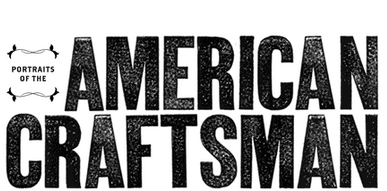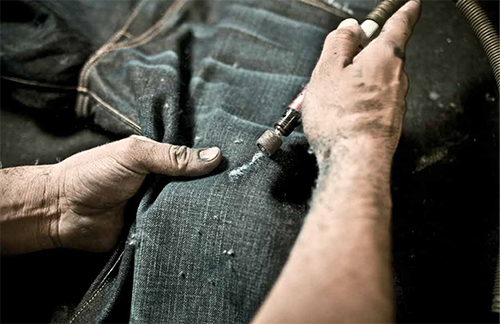Rising Sun Jeans: the reason we’re here.
Mike Hodis’s moment of clarity came when his daughter was born fourteen years ago. Hodis, then a design executive for a clothing company in Los Angeles, considered how the decisions he had made in life had been driven by financial concerns instead of personal ones.
“I started thinking about life beyond working for a typical clothing company,” Hodis says. “I wanted to
take the next step, start planning a phase of my life that had more meaning.”
That next step? Collecting old sewing machines. Hodis loved tinkering with vintage technologies—and not just garment-making tools, but also bikes and cars from the 1930s. He surrounded himself with the
trappings of craftsmen from decades past. They made him feel grounded in a time when most items were made by hand, not mass manufactured.
“It gave me a sense of something real, which I craved after she was born,” he says. “When all was said and done, I could come home from work, go in my garage, and just tinker. Just that machine and me.”
Eventually that garage, his “safe haven,” became very much like a 1920s tailor shop. It then morphed
into Rising Sun Jeans, a workshop and store where Hodis makes some of the finest denim garments in the world. The shop exudes the same aesthetic as Hodis’s jeans: timeworn, durable, and unique.
A trip for custom jeans today begins with a fitting session to adjust existing patterns to precise measurements. This involves pinning garments on the customer (easier than using a tape measure). A week or so later, after the first adjustments have been made to the sample, a first fitting tells Hodis where more-exact adjustments are necessary.
Then the construction begins, using methods from a century or more past. The steps to making a great pair of jeans can change depending on customers’ choices like what type of denim is preferred, or if they want the fabric raw unwashed or washed. One example: a garment’s “stitch-per-inch count,” in which a slower sewing machine making more stitches per inch of fabric indicates a sturdier, higher-quality
pair of jeans. The norm is six or seven per inch; Rising Sun garments usually feature eleven to twelve stitches per inch.
The finish also shows a level of craftsmanship not found in jeans at department stores. For one, the
rivets are hammered into the fabric to give them a weathered look.
Hodis says his company tries to fight modern means of production not because he’s against progress,
but because the old methods produce garments that reward handling and wearing.
“The sum of all these details is it has a human touch,” he says. “You can feel the craft behind it… People get that more and more. The reason we’re here is partly because there is in the consumer an awareness and reawakening to the value of what we do. People want to feel like they’re putting their shoulder to the wheel in their own way.”





